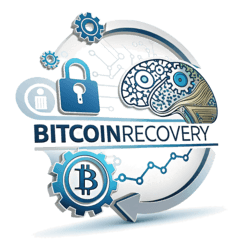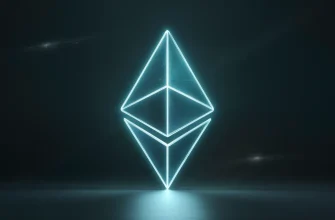
Wouldn’t it be great if we could use meme coins for more than just speculation and hype?
Why not extend the human lifespan through scientific research?
Pump.Science is a science decentralization protocol that was inspired by Pump.Fun, the meme coin launcher based on the Solana platform.
Pump.Science launched its online storefront on Thursday. The public will be able to purchase the supplements developed by the researchers using the platform.
Urolithin claims that it can support cell health by restoring the mitophagy process, which recycles damaged cellular mitochondria in order to improve energy and fight age-related decline.
The @solana Native Health Shop is now open
Preorders are now open for the first product
urolithin ahttps://t.co/VhuH2dgwme pic.twitter.com/yUAWyZb9gr
— Pump Science (@pumpdotscience) March 20, 2025
As Pump.Science co-founder Benjamin Leibowitz explained that the FDA's oversight of supplements varies based on several factors, including their ingredients and whether they have a history of safe consumption in common foods.
"Only supplements that meet specific criteria must go through the FDA,” Leibowitz told Decrypt. “Things that are naturally occurring, that have been in the foods that we eat—there are specific criteria for supplements that do not need to go through the FDA. It's called 'generally regarded as safe.'
Pump.Science can introduce longevity supplements faster than pharmaceuticals, in line with their decentralized funding approach.
Pump.Science, a platform built on the Solana Blockchain, was launched in September 2024 by Benjamin Leibowitz and Paul Kohlhass at Solana Breakpoint. It allows researchers to tokenize their experiments and create a market for supplements and longevity compounds that are still early stage.
Leibowitz explained that Pump.Science is inspired by Pump.Fun. “We wanted to be where the users are,” he said. Pump.Fun was successful because it’s easy to create a meme. Our goal is to make the launch of a scientific experiment easy.
Pump scientific research
Pump.Science, also known as Decentralized Sciences or DeSci in short, is a part of Web3’s growing Decentralized Science sector. The Decentralized Science project uses decentralized finance and blockchain to improve research transparency, collaboration, and reduce reliance on traditional financial institutions.
Investment by the public and private sectors in longevity research will reach $5 billion during the first six months of 2024. That’s down from $9.1 billion invested in 2022. The U.S. National Institute of Health has cut the indirect costs of research grants to a fixed 15% rate in February. This is a further concern for funding.
"Venture capital money doesn’t go into extending lifespan—it goes into drugs because they’re the most profitable,” Leibowitz said. “That’s just how the system works; they follow the profit."
Leibowitz stated that these barriers make decentralized financing an attractive alternative for researchers interested in longevity. DeSci uses smart contracts, DAOs and tokenized incentives to allow direct funding, peer-to-peer verification, and open publication. This reduces biases and obstacles while increasing accessibility and integrity of scientific research.
Pump.Science – How does it work?
Pump.Science’s idea is to create a tokenized pipeline for research that will guide projects through the entire process, from their initial proposal to commercialization. Researchers can submit their ideas, raise money with tokens, then conduct various experiments.
Tokenized Research Pipeline
- Idea Submission: Researchers propose a project for research and pay 3 SOL.
- Worm trials: the first phase tests compounds on worms.
- Fruit flies are used if the results of fruit fly trials prove promising.
- Tests on mice: These tests are used to validate the results.
- Human trials: Participants wear Apple Watches and Fitbits.
- Commercialization: If there is a demand, the compound could be sold.
Leibowitz, when addressing concerns regarding transparency and integrity of Pump.Science’s products, highlighted the safety measures that have been put into place.
“We only work with white labeled laboratories that are highly-respected.” They must live stream data for accountability, and we maintain a full audit trail—receipts for everything, including ordered compounds,” he said. “Our contracts also prohibit insider trading, ensuring labs can't trade these tokens.
The key is partnering with credible labs that follow well-validated procedures."
Leibowitz did not provide specifics, but he said that labs receive compensation for the research they conduct.
Leibowitz acknowledges the difficulty of attracting research labs to the platform while keeping the community engaged—especially during a downturn in the cryptocurrency market.
At a 400 million dollar market cap it was simple to get attention, and then direct that attention,” said he. However, token prices are down, and it’s been difficult to maintain a vibrant community.
In addition to market fluctuations, Mr. Ayers said that the bigger challenge lies in balancing long-term goals with a local community which is often focused only on short-term gain.
Leibowitz stated, “We are not a coin meme; we build infrastructure that helps people live longer.” The hardest part was when people only cared about token prices, which were falling out of our control.
Pump.Science, which uses the same strategy as meme coins, aims to bring crypto enthusiasts and traders into the world of scientific financing.
Token holders can participate in an experiment-funding system that uses the trading volume to fund experiments. This creates a cycle of discovery and investment.
Leibowitz stated that “the key element here is gamification. But this is even more exciting than meme coins because there is always new data available to analyze, and trading decisions are to be made.” “If you're a gamer, there's a game to play as data gets released—we just need to make it fun.
“Making Science Fun will Attract More People,” He Said.
Editor by Sebastian Sinclair


